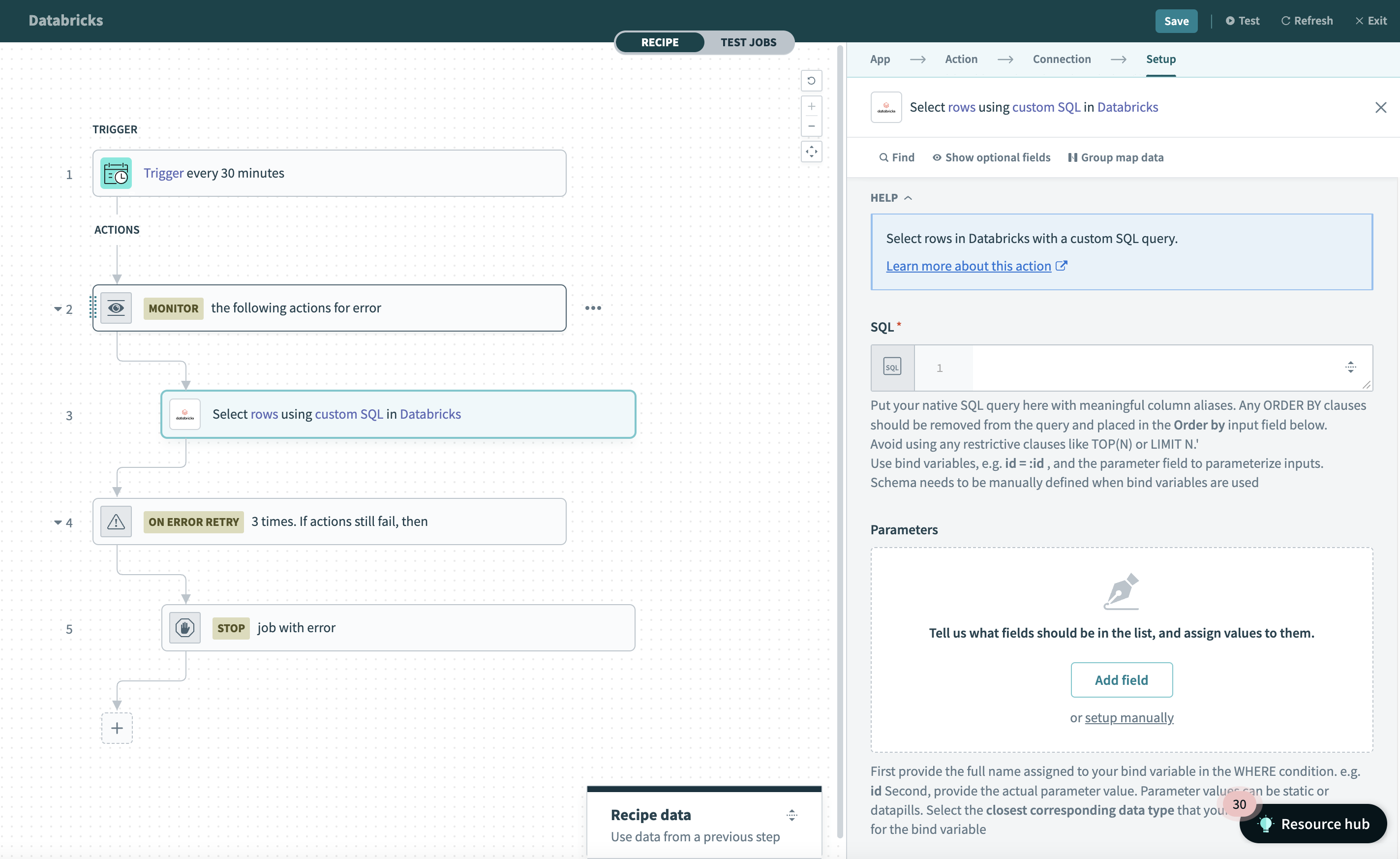# Databricks - Select rows via custom SQL action
This action lets you select rows based on a custom SQL query. Rows that are returned from the query will be returned as the output of this action.
 Select rows via custom SQL action
Select rows via custom SQL action
# Input fields
To use this action, configure the following input fields.
SQL
Provide the SQL query you plan to use to select rows. The query is used to generate the output datatree. To do this, the SQL is executed when you provide it. Use bind variables. For example,
ID = :idand the parameter field to parameterize inputs.
You must manually define the schema when you use bind variables.CLAUSES TO AVOID
Avoid using limit clauses like
LIMITorTOP(N)in your SQL. This is because the limit to the number of rows returned in the query is based on the value defined in the Limit input field. Adding your own limit clause causes the action to fail. Additionally, removeORDER BYclauses from the query and place them in the Order by input field.Parameters
This field is used in conjunction with your
WHEREcondition. First, declare the named bind variables in yourWHEREinput. Next, assign values to these variables using this input field.
Parameter values can be static or datapills. Select the closest corresponding data type that your database is expecting for the bind variable.Order By
Rows returned from this action can be ordered based on the Order by input field. This field is used to change the default ordering of rows from your Databricks database.
You can also define the direction of order for each column you plan to order by. The following Order by statement orders rows bypriorityin ascending order followed byupdated_atin descending order (latest first).PRIORITY ASC, UPDATED_AT DESCLimit
This input field determines the maximum number of rows to return. The default limit is 100 and capped at a maximum of 50000 rows for a single Select rows using custom SQL action.
Offset
This input field gives you the option to skip rows before returning rows from the query expression. For example, to skip the first 100 rows of the selected results set, input
100to this field. The default is0.Output fields
Use this field to define the columns returned in your query. Workato does this dynamically, but you can use this field to override any columns in case of errors. The name of the fields defined here must match the column names in your query exactly.
# Output
This action creates the following output.
rows
A JSON array of objects. Each object describes one row of the selected data.
rows_count
The number of rows returned.
Last updated: 5/21/2025, 5:22:32 AM